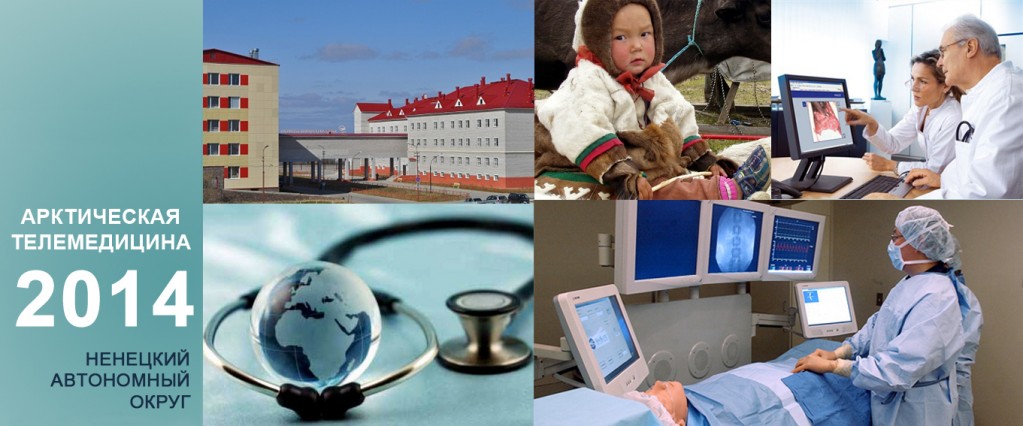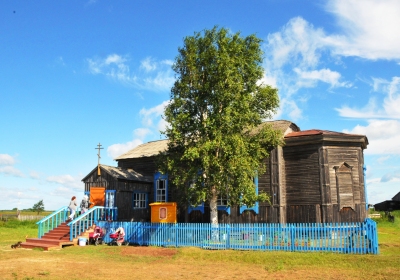Articles
The Northern regions are usually sparcely populated and communication between settlements is often either hard, or not possible. In conditions like this, support of the modern healthcare system capable of treating serious diseases appears as incredibly expensive and nearly impossible. However, use of modern technologies can sufficiently simplify and cheapen functioning of remote healthcare centers.
This pilot project has reached certain success in workshops and experience exchange in Anchorage, Khanty-Mansiysk, Yakutsk, Seattle and Pyeonchang. Experts from Khanty-Mansiysk and the Sakha Republic held meetings with experts from the United States, Republic of Korea (Gangwon) and Finland – what accelerated the inception of this technology in life. Priority topic on all meetings remains the technological aspect of telemedicine initiative.
During work of this initiative, specialists from Khanty-Mansiysk and Sakha held meetings with experts from the United States, South Korea (Gangwon Province) and Finland – what allowed toincept this remote treatment technology into life. Experience exchange is held mostly around technical issues.
This project is funded by participating organizations
Contact: Nikolayev Matvei Khristoforovich, Sakha Healthcare Ministry, Coordinator for Telemedicine, Head of Telemedicine Department, State budget organization YRMIAC , m/t. +7(914)224-68-52, landline. +7(4112)42-96-51;
Participants: Khanty-Mansiysk: Tsaregorodcev Alexander Leonidovich,
Deputy Director for science in URIIT Institute, Khanty-Mansiysk AO, t. +7(3467)35-91-35; email:
picture link: http://internetmedicine.com
As the dangerous infectious diseases kept spreading across the North, the damage from this made the international community to pay more and more attention to this problem. In 1998, an Arctic Council SDWG project called ICS was launched as a joint response to threat of the infection. This project was meant to be a circumpolar epidemic surveillance body.
Next decade brought TB to the scope of infections in the North, as its severity was growing higher. This circumstance pushed more regions to join international cooperation. In 2006 ICS has launched a tuberculosis working group. This working group consists of members from Canada, Northern Sweden, northern regions of Russia and the Arctic region of the United States (Alaska). In 2008, the Northern Forum has joined with a new project called “Infectious diseases Circumpolar Surveillance Network”.
Currently this project is implemented by participating organizations from member regions, accompanied by specialists from ex-members of the Northern Forum – State of Alaska and Saint-Petersburg. Despite this project was initiated with aim to cover all types of infectious threats, its focus has moved with time to the TB issue, what later launched the separate Northern Forum working group.
Currently, this project has:
- A determined set of aims and tasks for the TB Working Group
- An executive body of the Working Group and its plan of research
- A TB Working Group that engages practically all Circumpolar states in its activity
- Settled core questions on composition of the international TB database and a position on data transfer between the participants of the WG.
- Formulated an aim for joint research on study of TB in the Northern territories.
- To develop data transfer protocols and provide adequate security measures
- To carry out a retrospective research on TB infection cases for the last 5-6 years
- To build an algorithmic-mathematic model of development of TB epidemiologic process in the Circumpolar North regions.
- To execute international moderation of events dedicated to lower acuteness of the TB epidemiological situation in the Circumpolar North, with an accent on the Indigenous peoples of the North
Core aims for the TB WG for 2014-2015 and in perspective:
Secretariat recommendations:
Under Khanty-Mansiysk chairmanship:
- To elect members of the Working group.
- To outline a working plan for the following 2 years and forward it to the Secretariat no later than 18th of January 2014.
- To hold a seminar in Russia in 2014 to determine opportunities for extension of interregional participation in the project to continue cooperation with the Arctic Council on this project.
- To present a report to the RCC in 2014.
Lead region: Khanty-Mansiysk
Participants:
Sakha - Kravchenko Alexander Fyodorovich, Director for the State Budget Organization of the Sakha Republic, NPC “Phtisiatria” +79246609902 ;
Vinokurova Mariya Konstantinovna, Deputy Director for the State Budget Organization of the Sakha Republic, NPC “Phtisiatria” +79644239494
Rural Development is not an active project, yet it is an already-running initiative that has been showcased on the 2013 General Assembly of the Northern Forum by a Head of Shapsha village from Khanty-Mansiyskiy AO, Russia - a village with impressive results of sustainability.
Climate change, increasing energy costs and the need to reduce the production of greenhouse gas emissions have generated a new focus on sustainable energy production, particularly in remote and northern regions. Significant work has been done through the Arctic Council to look at oil and gas resources, but little focus has been given to the development of resources and technologies to improve energy efficiency and energy security. There is a need to have a closer look at sustainable energy technologies, their development and application, as a way to support more sustainable economic and community development. The 2008 SDWG Energy Report to Ministers recommended an Arctic Renewable Energy Assessment to report on” the status of renewable energy developments in the northern circumpolar region, and to assist in identifying a research agenda in relations to Arctic renewable energy issues.” (p.28)
Latest activities:
Presentation by Lyubov Ovcheryukova, head of Shapsha village of the Khanty-Mansiysk AO, at the RCC Meeting in Moscow in October 2013 – about work carried out on sustainable development in the village.
Leading region: Khanty-Mansiysk
Contact:
Lyubov Ovcheryukova, Head of Shapsha village, Khanty-Mansiysk AO; tel: +7(3467)37-24-33, 37-25-15;
picture link: http://hmrn.ru

The eight Arctic states work closely together on numerous Arctic-related issues, both through the Arctic Council and in various other forums.
Between the WW II and the late 20th century, the Arctic was one of the playgrounds of the cold war experiencing nuclear armament and frozen international relations. The cold war political environment left the area distant and remote for the people outside the region and it was not until the emergence of the perestroika in the Soviet Union which gradually brought the cold war enemies closer and eventually to the same table in 1989.
The first purely Arctic oriented meeting of the eight Arctic countries took place in Rovaniemi Finland in september 1989. The topic of the meeting was the fragile Arctic environment and a potential for joint effort in tackeling the very delicate but urgent issue. After intensive cooperation for the next two years, the Arctic Environmental Protection Strategy was initiated in 1991. The AEPS concentrated on cooperation in scientific research and sharing of data on effects of pollution as well as assessing the potential environmental impacts of development activities in the Arctic through its four specific measures, namely Arctic Monitoring and Assessment Programme, Protection of the Marine Environment in the Arctic, Emergency Prevention,Preparedness and Response in the Arctic and Conservation of Arctic Flora and Fauna.
The cooperation around the AEPS was quite untraditional for many reasons. First, it was one of the first venues where the cold war parties cooperated together to reach a common goal and secondly it became one of the very few inter-governmental institutions including indigenous peoples of the region in the work from the beginning.
It became, however, soon clear that the Arctic issues and the change happening in the Arctic environment would have such an immense impact globally that it was decided that the AEPS would step aside and new inter-governmental high level forum would be created to deal Arctic environmental issues. In 1996, the Arctic Council, with membership of all eight Arctic states and permanent participation of regional indigenous peoples' associations, was established to promote cooperation, coordination and interaction in issues of sustainable development and environmental protection.
Yet a new development on the Arctic cooperation occured in May 2011, when the Arctic states signed the first legally binding agreement established under the auspices of the Arctic Council. The Agreement on Cooperation on Aeronautical and Maritime Search and Rescue in the Arctic lays down a framework to strengthen search and rescue cooperation and coordination in the Arctic airspace and waters.
In addition to the official state-level cooperation taking place in the Arctic Council, two other cooperation themes in the Arctic have been indentified by the Arctic Human Develoment Report.
The first theme focuses on the increasing circumpolar cooperation by indigenous people's organizations and sub national governments, culminating in notion "North meets North." In facing harsh socio-economic realities and degradation of human rights the Indigenous peoples and local communities have realized the value of cross border cooperation in their battle for human rights and increased socio-economic development. Organizations such as RAIPON (Russian Association of Indigenous Peoples of the North) and the Saami Council have been working towards the international recognition of indigenous people's rights and the consideration of traditional livelihoods in national politics.
The second theme focuses on the relationship between the Arctic and the outside world. The first signs of interest in the Arctic from southern latitudes were during the Cold War, because of the military issues. But the amount of natural resources and potential trans-Arctic transportation routes make the region strategically and economically relevant for most European, North-American and North-East Asian countries. The economies of the North are closely related and the importance of the Arctic region will rise due to ever increasing demand for resources. Also globalization will keep bringing in new actors to the Arctic and cooperation continues to grow in various fields in the future.
For more information on a region of your interest, please use clickable region names below.
| Arctic Council states | Northern Forum Regions | |
| Canada | Akureyri (Iceland) | Murmanskaya Oblast (Russia) - Observer |
| Greenland | Chukotskiy AO(Russia) | |
| Finland | Gangwon-do (South Korea) | |
| Iceland | Kamchatskiy Kray (Russia) | |
| Norway | Khanty - Mansiyskiy AO (Russia) | |
| Russia | Sakha Republic (Yakutia) (Russia) | |
| Sweden | Yamalo-Nenetskiy AO (Russia) | |
| United States |
Many international organizations and affiliations work within the Northern Forum´s community to make the Northern regional affairs and issues stronger. Most of these organizations are public but the community also includes associations of common stakeholders. All of them have though one thing in common; to promote Northern affairs.
Inter – governmental (IGOs) and non - governmental organizations (NGOs) have assumed an important role in the development of regional Northern cooperation.
Below is a list of international organizations in the North.
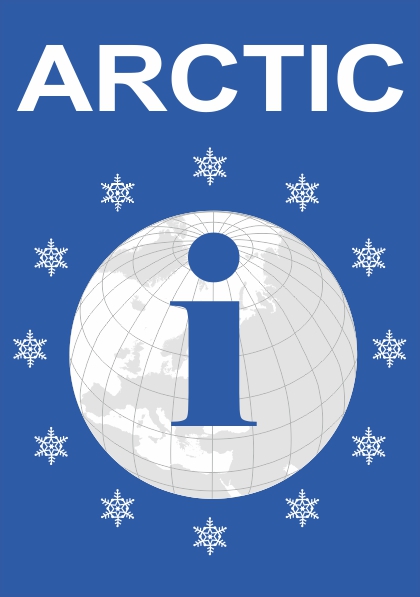 |
 |
 |
 |
 |
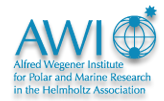 |
 |
 |
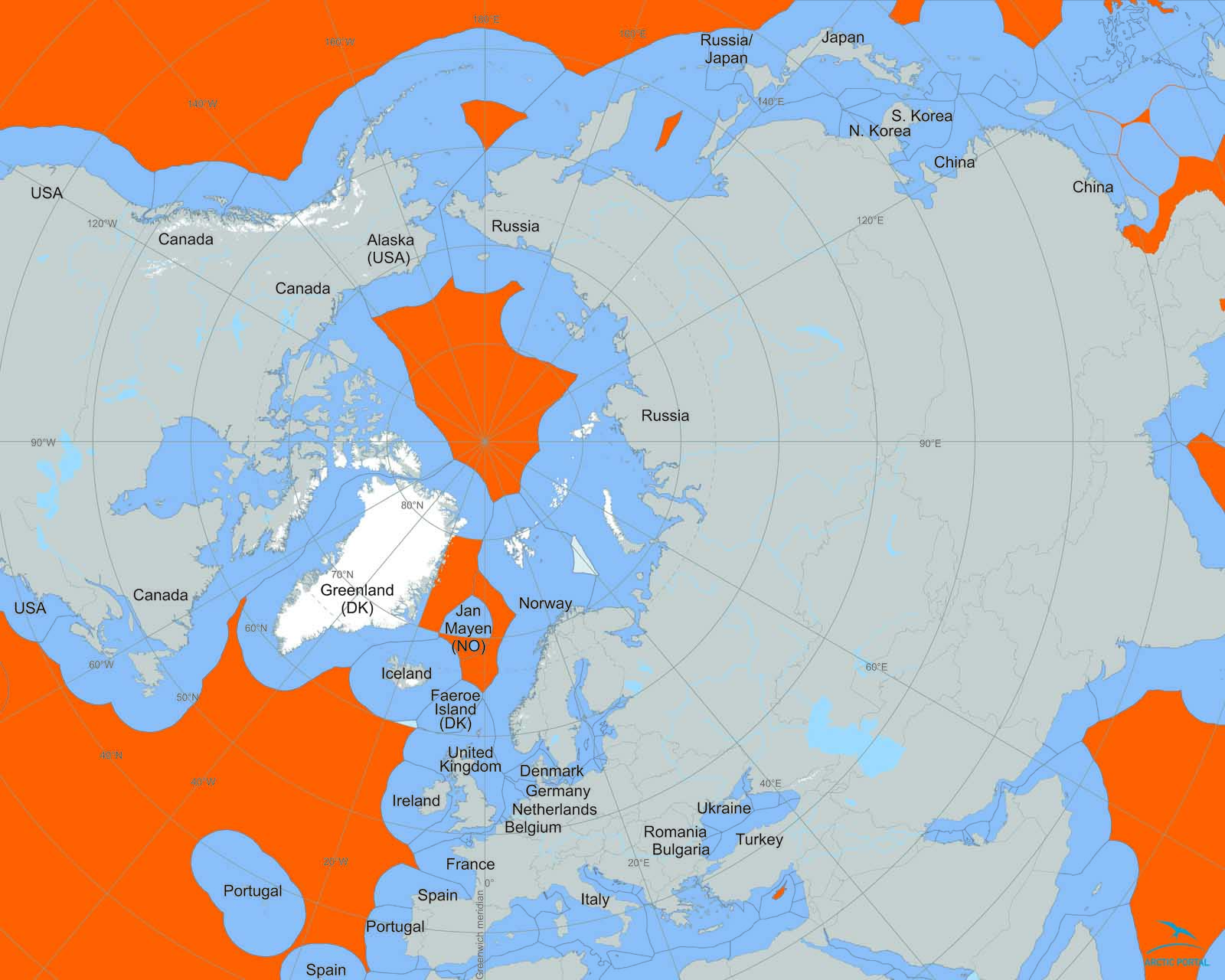
The fact is that no one owns the North Pole, but every country bordering the Arctic Ocean claims some of its parts.
The North Pole is covered by the thick layer of ice. The ice shelf is not considered land but water therefore it is governed by United Nations Convention on Law of the Sea (1982), signed by more than 150 countries.
The UNCLOS agreement allocates each nation control over the area up to 200 nautical miles (230 miles) of its cost and whatever natural resources can be extracted within this area.
This seemingly straightforward rule is complicated by another regulation that allows countries to extend their waters to up to 350 nautical miles (403 miles) if they can prove their underwater continental shelf extends beyond the normal 200-mile boundary.
So far, the Arctic Ocean has had a status of high seas, but after the discovery of the vast potential natural resources in the area, many Arctic states have started to re-evaluate their continental shelf.
When Russia planted a flag on the floor of the Arctic Ocean in August 2010, the country's aim was to show that a long ridge extends the Siberian continental shelf past Russia's 200-mile line, giving Moscow the rights to waters nearly all the way up to the North Pole. To do this, a nuclear-powered Russian ice-breaking vessel had to carve its way through the Arctic ice, and then dispatch two miniature research submarines down to the bottom of the ocean.
Of course, countries can't make formal claims just by planting a flag—they have to present scientific evidence demonstrating the size of their continental shelf to a U.N. Commission on the Limits of the Continental Shelf (CLCS) which then makes recommendations to coastal States.
Russia had appealed for more territory back in 2001, but the panel rejected the claim and requested more evidence. Part of the mission of the flag-planting Russian mini-subs was to gather data for a new petition.
What happens when countries' waters overlap? If the United Nations concludes that the lay of the seabed gives two countries rights to the same area, they can settle their boundary dispute independently or through a U.N. tribunal. So far, there haven't been any disputes like this in the Arctic, but researchers have yet to map the entire Arctic seabed. What's known of the topography suggests that Canadian waters may end up intersecting with those of Russia and Greenland.
Right now, the United States is the odd man out, legally, because it's the only country with Arctic interests that hasn't signed onto the Law of the Sea. (President Reagan refused the treaty because he thought it would hamper U.S. underwater mining.) While part of the UNCLOS has today customary international law status and the statements of the currents US leaders that the UNCLOS will be signed in near future, it remains to be seen whether the US reluctance to sign the treaty will have significant impact in the Arctic.
Уважаемые пользователи!
Чтобы открыть желаемые документы на английском языке, переключите сайт в режим английского языка в верхнем правом углу меню.



